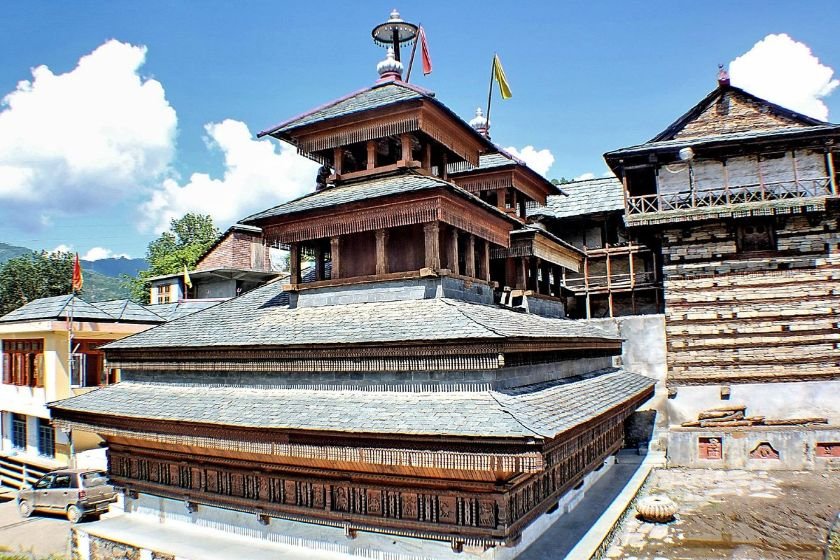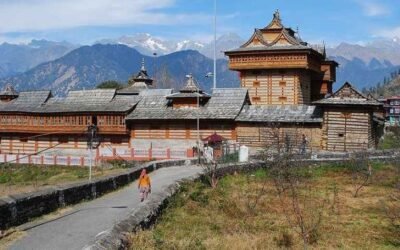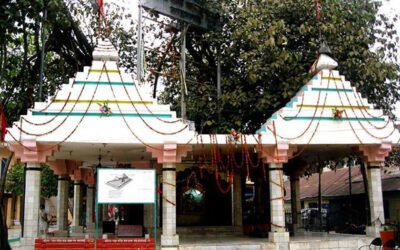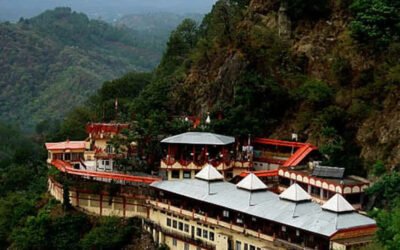Where the goddess of ten wisdoms watches in silence, and the Pandavas left their mark
Tucked in the serene village of Kao, just 7 km from Karsog in Mandi district, the Kamaksha Devi Temple—also known as Kamakhya or Kamaksha Mata Temple—is a rare and powerful Shakti shrine dedicated to Goddess Durga in her fierce form as Kamaksha, one of the Dasha Mahavidyas. This temple is one of only three Kamaksha temples in India, the others being in Assam and Kanchipuram, making it a spiritually potent and culturally unique site in Himachal Pradesh.
🌄 Location & Accessibility
- Location: Kao Village, near Karsog, Mandi District, Himachal Pradesh – 175011
- Altitude: ~1,400 meters
- By Road: 7 km from Karsog, 90 km from Mandi, 100 km from Shimla
- By Rail: Shimla Railway Station (~100 km)
- By Air: Jubbarhatti Airport, Shimla (~110 km)
- On Foot: A short walk from the village center through apple orchards and pine forests
🕉️ Deity & Worship
The temple is dedicated to Goddess Kamaksha, a form of Durga who is both fierce and compassionate, known for granting wishes and destroying evil. According to legend:
- The goddess slayed Mahishasura, the buffalo demon, at this very site
- She is worshipped as the kuldevi (family deity) of the Suket royal family, and has ties to Bushahr and Kullu dynasties
- The temple is considered a Kali Peeth, and is believed to be active since Satyuga
Devotees offer red flags, coconuts, and ghee lamps, and the temple is especially visited during Navratri and Ashtami, when the goddess is believed to manifest in a devotee at midnight.
🏛️ Architecture & Setting
The temple is a wooden marvel of Himachali folk architecture, featuring:
- Pagoda-style roofs with intricate carvings of tigers, deer, serpents, and floral motifs
- Ashtadhatu idols from the Pandava era, placed on a chariot during annual fairs
- A courtyard shaded by cedar trees, ideal for meditation and rituals
- A sacred spring and stepwell, used for ritual purification
The temple’s carved ceilings and painted panels make it a living museum of Himalayan craftsmanship.
📜 Mythological & Cultural Significance
- The temple is believed to be from the Parashurama or Pandava period, with relics and statues supporting this claim
- The name “Kamaksha” links it to the Kamakhya Shaktipeeth in Assam, where Sati’s yoni is believed to have fallen
- The goddess is said to appear only once a year, during Sharad Ashtami, to bless her devotees
🎉 Festivals & Celebrations
- Navratri (Spring & Autumn): Celebrated with devta processions, bhajans, and night-long vigils
- Ashtami Fair (October): A mystical night when the goddess is believed to manifest in a devotee
- Daily Worship: Morning and evening aartis, Durga Saptashati recitations, and offering of red cloth and sweets
🏞️ Nearby Attractions
- Mamleshwar Mahadev Temple: A Pandava-era Shiva shrine with an eternal flame
- Chindi Mata Temple: A wooden Shakti shrine with ant-drawn architecture
- Shikari Devi Temple: A roofless shrine atop the highest peak in Mandi
- Apple Orchards & Forest Trails: Ideal for nature walks and spiritual solitude
🙏 Spiritual Experience
The Kamaksha Devi Temple of Kao is not just a shrine—it is a whispered Shaktipeeth, a place where the goddess of ten wisdoms sits in silence, and the hills remember her roar. As you step into its carved sanctum, with the wind rustling through cedar leaves and the scent of incense in the air, you feel the presence of a mother who grants, guards, and guides. It is a temple where myth breathes, and the **soul finds its wish in the gaze of the goddess.




